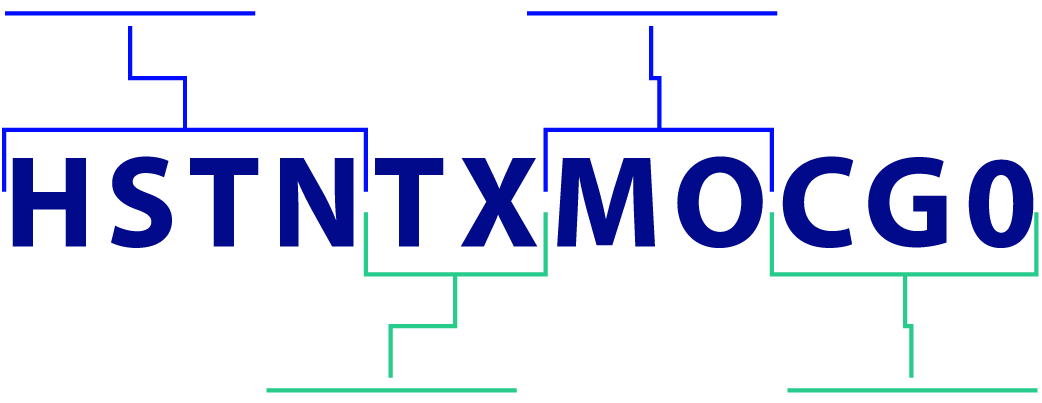The Easiest Way to Connect Network locations
Common Language Location Identifier (CLLI)
What Are CLLI Codes?
They define the quickest path between two points on a network.
Describe computer and significant hardware pieces (eg: manhole or pole) locations. Track the verticle and horizontal coordinates to calucate the distance between two network locations.
Breaking Down CLLI Codes
Geographical
Huston
Building Identifier
AT&T Exchange

Geopolitical
Texas
Electronic Telephone
The first or only switch at this location
Characteristics
Telephone companies often give names to their central offices. The names frequently relate to the name given to the exchanges served from that office in the days of two-letter, five-number dialing, where a telephone number might have been referred to as “MOhawk 3-1234”. The numbers are now listed as all-figures, so (713) MOhawk x-xxxx becomes +1-713-66x-xxxx.
The Geographical code field does not always align exactly with the city location. West University Place is an enclave of Houston, Texas.
The Four CLLI Formats
Network Site Code Format
A Network Site code represents any existing or proposed building, structure, or enclosure, where there is a need to uniquely identify one or more network functions. Network Site codes are typically used to identify building locations, such as central office buildings.
- The first six characters are the city (four letters) and province/state (two letters). Each territory is normally identified using its two-letter ISO 3166-2:CA or ISO 3166-2:US postal abbreviation suffix (with exceptions: Québec as PQ and Nunavut written as VU).
- The seventh and eighth characters in this format are known as the Network Site code element and denote the specific location or building address. These will be either two letters or two numbers; a X followed by a letter identifies a local independent telephone company building.
Network Support Site Code Format
A Network Support Site code represents any non-building structures or outside plant equipment such as Wireless Access Points, International Boundary Crossing Points, End-Points, Fiber Nodes, Junctions, Manholes, Poles, Base Transceiver Station / Radio Equipment and Repeaters.
This format contains 6 characters representing location and a 5-character Network Support Site Code element.
- The first six characters are the city (four letters) and province/state (two letters)
- The seventh character is a letter. X identifies any independent telephone company location. The letter otherwise is the location type: B (international boundary crossing), E (end point or non-international boundary), J (junction), M (manhole), P (pole), Q (radio location), R (repeater), S (toll station) or U (other or utility (per Pete[clarification needed])).
- The eighth through eleventh characters contain a four-digit identifying number.
The code for a communications satellite is STLT (satellite) EO (earth orbit) Q (radio location) then a four-digit identifier.
Network Entity Code Format
CLLI codes in the Network Entity format are the most commonly used CLLI codes. Network Entity codes are eleven-character codes used to describe the location and function of network equipment.
- The first eight characters are the city, province/state and network site location (see Network Site Code Format, above).
- The ninth, tenth and eleventh characters of a Network Entity code specify a particular type of equipment function at a Network Site location.[5]
- Three-letter entity codes often begin with two letters to identify combinations of switching equipment such as MG (crossbar exchange – marker group), SG (step-by-step exchange – step group), CG (electronic switching system – control group), DS (digital switch), CT (concentrator) or RS (remote switcher).[6]
- Non-switching entity codes may begin with A (administrative office space and computers), E (exchange switchroom), F (frame), K (software cross-connectable entity), M (maintenance group), P (test/service position), Q (radio tower), S (service centre), T (toll test) or W (miscellaneous), followed by anything except G (to avoid conflict with switches).
- Reserved final (eleventh) characters include B (‘board’ – operator and switchboard positions including ‘0’ and ‘4-1-1’), D (various termination entities, including mobile or CLEC exchanges, hosted Centrex, 9-1-1 dispatch, time/weather and pre-recorded announcements), T (tandem), I, O, U, W or Y (not used). The specific type of board or termination entity is specified by the tenth character.
Customer Site Code
A Customer Site code is used to uniquely identify customer locations. These locations are required to identify customers, circuit terminations, facilities, or equipment for each specific customer for facility provisioning or other requirements. This format contains 6 characters representing location and a 5-character Customer Site Code element.
- The first six characters are the city (four letters) and province/state (two letters)
- The seventh character is a number, followed by a letter, then three more numbers.
Entities within client-owned buildings (such as Centrex installations) are coded in the same format as telephone company buildings.
Connect to Fiber With GhostComm
With speeds up to 2000x faster than typical business Internet and direct connectivity to the world’s major networks, Ghost Comm gives MD and DC the connections it needs to grow faster.

